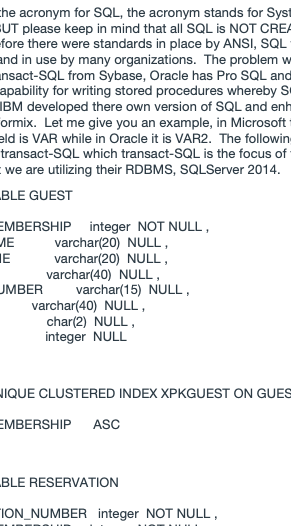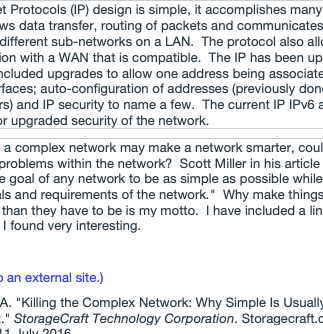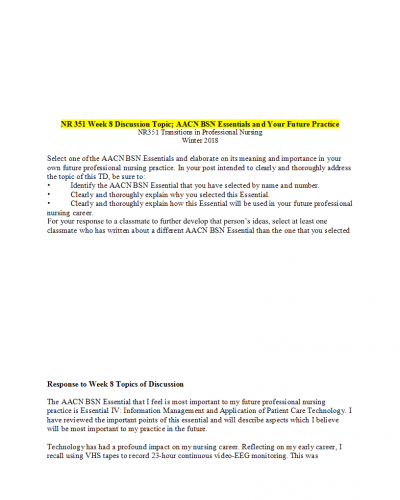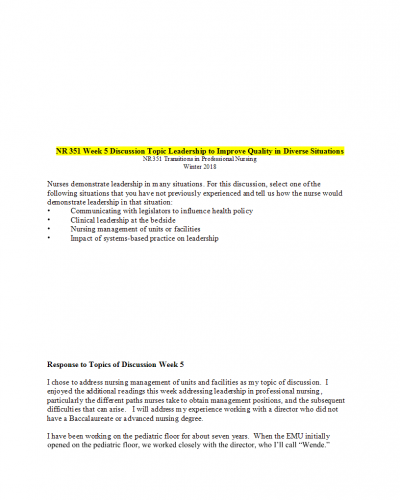visually impaired teaching.docx
$4.99$16.99
visually impaired teaching.docx
Every visually impaired student at school doing any academic learning is supported by theTVI (Teacher of the Visually Impaired) in each subject and semester to learn. All students are thereafter required to demonstrate their daily understanding and focus by completing tests and assignments which have long-term goals of proper mastery of content to pass the high-stakes test.Basically, technology in learning and teaching is applied fully in all school curriculums. In every student and subject, technology is viewed as a common denominator. In the current paperless 21stcentury, for every student to be successful, they should be proficient in technology in the classroom. However, when focusing on visually impaired students, there are several assessments and inclusive teaching strategies that can be applied to help them learn. It is not right to take for granted the everyday information we receive as there are some visually impaired students that don’t have a visual experience for a lifetime where they can draw upon it.
Description
visually impaired teaching.docx
Every visually impaired student at school doing any academic learning is supported by theTVI (Teacher of the Visually Impaired) in each subject and semester to learn. All students are thereafter required to demonstrate their daily understanding and focus by completing tests and assignments which have long-term goals of proper mastery of content to pass the high-stakes test.Basically, technology in learning and teaching is applied fully in all school curriculums. In every student and subject, technology is viewed as a common denominator. In the current paperless 21stcentury, for every student to be successful, they should be proficient in technology in the classroom. However, when focusing on visually impaired students, there are several assessments and inclusive teaching strategies that can be applied to help them learn.
visually impaired teaching.docx
It is not right to take for granted the everyday information we receive, as there are some visually impaired students that don’t have a visual experience of a life that they can draw upon it. For this specific reason, it is crucial when designing learning that we consider the total content in the assumed visuals. Henceforth this informative essay I will discuss the evolving technology that can be applied while teaching visually impaired students in order to learn effectively and efficiently, just like other students. Over the years, assistive technology (AT) has evolved drastically, and it continues to evolve more rapidly among visually impaired students. The smartphone and mainstream tablets have developed magnification options and built-in screen readers. Also, the computers have screen reader software and native screen readers.
visually impaired teaching.docx
In early childhood settings, teaching communication, language, and literacy aim to improve a child’s knowledge, skills, or general understanding that is related to writing or reading. Most of the contemporary approaches focus on engaging the learners in the learning process. The approaches may also involve components that are common in language and communication approaches, which also involve the engagement of the parent. A significant contemporary approach used to teach in an early childhood setting is storytelling and group reading. According to Gonzalez-Mena (2009), storytelling and group reading promotes imagination and brain development and spark curiosity while teaching the child about emotions and language at the same time.
visually impaired teaching.docx
This will allow a child to know the language, words, and sounds; thus, learn communication, language, and literacy. Introducing the child to different varieties of writing is another fundamental approach. This involves allowing the child to scribble randomly to enable the child to explore markers, crayons, and pencils on paper. The child is then guided to transition from drawing to writing and moving from scribbles to print, and eventually to learning written language and literacy. Another contemporary approach is engaging a child to take part in activities that strive to develop early phonics, knowledge of sounds, and letter knowledge as well.
visually impaired teaching.docx
- NURSING 502 – medical (1537 Documents),
- NURSING C2346 – (865 Documents),
- NURSING C622 – Ophthalmology (212 Documents),
- NURSING 341P – (159 Documents),
- NURSING 310 – 310 (107 Documents),
- NURSING 3165 – (104 Documents),
- NURSING 440 – 440 (84 Documents),
- NURSING 520 – 520 (61 Documents),
- NURSING 3069 – 3069 (41 Documents),
- NURSING 2 – 2 (35 Documents),
Only logged in customers who have purchased this product may leave a review.







Reviews
There are no reviews yet.